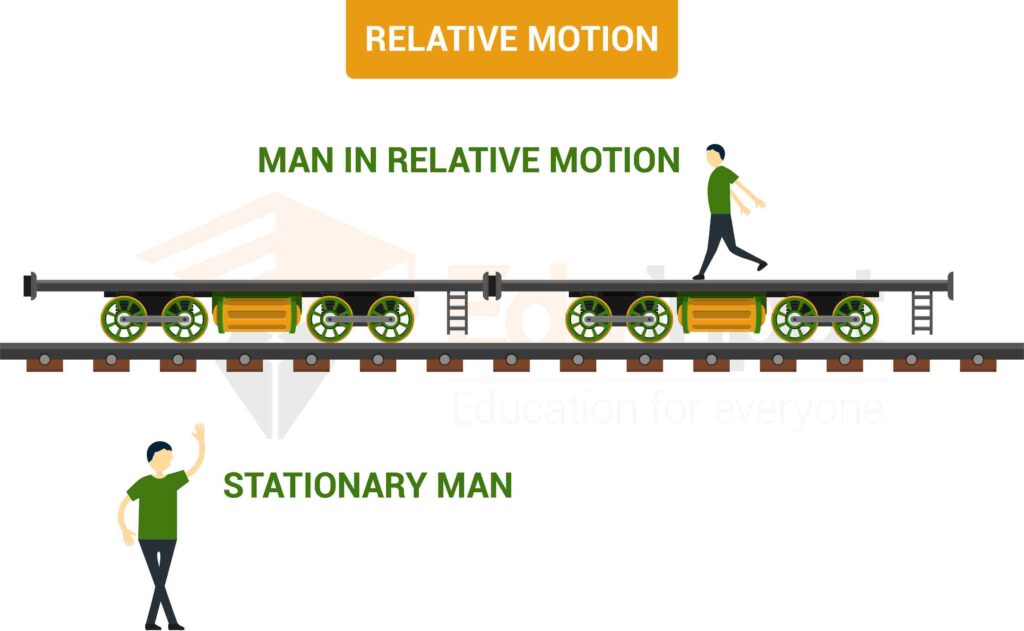Relative Motion-Definition and Example
Relative motion defines as the change of position of an object with respect to another object or a reference point that is fixed is called relative motion.
Relative motion
Relative motion can be circular motion or linear motion. It depends on the observer. When a ball is thrown up the up direction is only for that particular place. It will be a ‘down’ position for a person who is on the diametrically opposite side of the globe.
The walls of the cabin of a moving train are stationary with respect to the passengers sitting inside it but are in motion to a person stationary on the ground.

The theory of relativity deals with those cases in which observers are in a state of relative motion. There are two types of theories.
- The general theory of relativity
- The special theory of relativity.
Thus there is nothing like absolute rest or absolute motion. All the motions are relative to a person or instrument observing it. Thus the concept of direction is purely relative.
Similarly, the rest position and motion of an object are not the same for all observers.
Relative Motion Example
Consider two cars moving with constant velocities in any direction. A ball is thrown straight up It will come back straight down. This will happen in both cars
Now suppose one car is stationary. the person in the other car which is moving with constant velocity throws a bail straight up. He will receive the ball straight down. But the person sitting in a stationary car observes that the path of the ball in a parabola.
Thus, when experimenters observe the experiment in their own frame of reference, the same experiment gives identical results. But if they look into her frames, they observe differently. So observations are not identical in two different frames of references
When we talk about nature, we have seen that all the objects move. This movement is called relative motion and that is what we call kinetic energy.
Difference between relative motion and kinetic energy
Relative motion is the movement of an object in relation to another object. It means that when an object moves, it is relative to the fixed objects and the motion of the object will be considered relative. For example, when you ride a bike, you will move with respect to the road and when you ride a bicycle, it means that you move with respect to the ground.
Kinetic Energy
Kinetic energy is the movement of the object at its own speed, so when you talk about kinetic energy, it means that a person is moving with the help of his own momentum.
The energy that is possessed by the object is known as kinetic energy. When an object is moving with the help of its own energy, it is called kinetic energy.







Leave a Reply